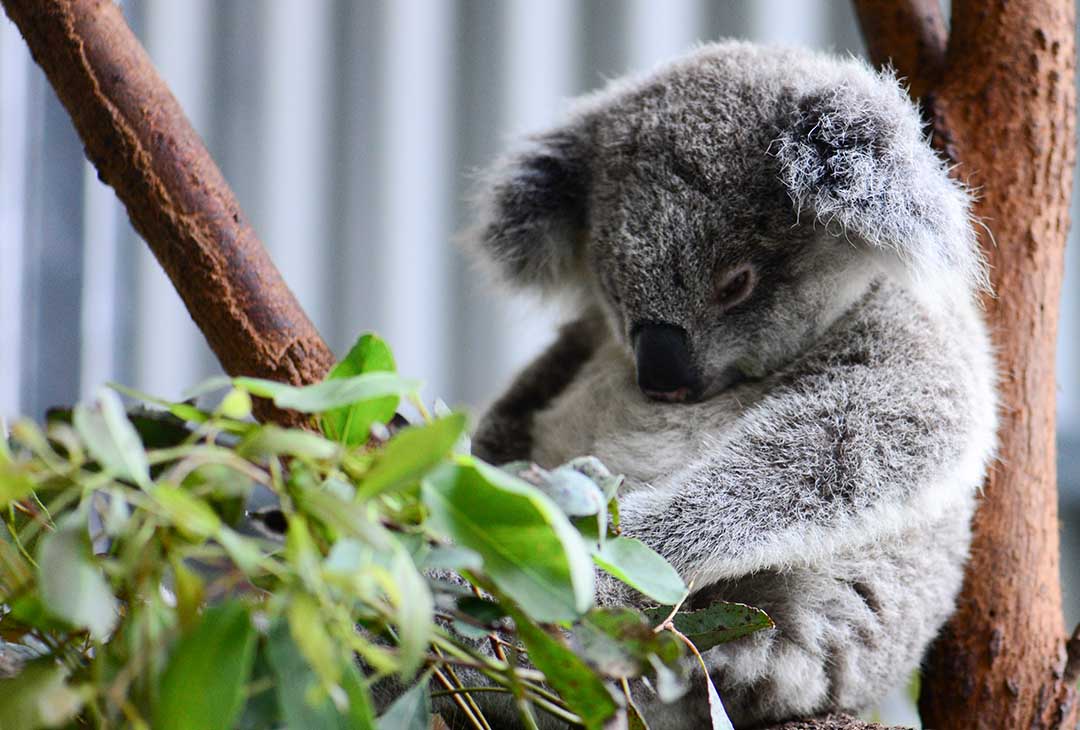The fight to save Koalas
The devastating disease chlamydia is sweeping through Queensland’s koala population: The committed team at Currumbin Wildlife Hospital is doing amazing work treating koalas in need.
The Currumbin Wildlife Hospital celebrated it’s 30th anniversary this year. The hospital is renowned for the amazing work it does treating sick and injured wildlife. Senior vet and General Manager of the Currumbin Wildlife Hospital Dr Michael Pyne has been an integral part of the growth of the hospital, starting with Currumbin Wildlife Sanctuary team in 2000. “Treating more than 11,000 patients in the past 12 months has cost our Wildlife Hospital over one million dollars. The equipment we require to treat these animals is expensive, but it is essential in ensuring a quick recovery and improving the outcome for our patients. Around 75 to 80 per cent of all koalas that come into the hospital test positive for chlamydia. This is a huge issue.”
Dr. Pyne and his dedicated team here are committed to helping precious Australian wildlife, and he says koalas can be the most challenging. “We’re all familiar with reading about koalas losing their natural habitat, but the other really important crisis is chlamydia,” Dr. Pyne says. While the strain of chlamydia that infects koalas is different to the one that infects humans, it can be sexually transmitted in the same way. Genetic evidence suggests that the chlamydia bacteria is infecting koalas via transmission from originating livestock. “Early intervention with chlamydia can make a huge difference in a koala’s chances,” Dr. Pyne says. “Koalas in Queensland and northern NSW are a threatened species, which is not the case in South Australia and Victoria. Chlamydia can make koalas sterile, meaning they can’t breed, so the worry is that the ones we treat in here are just the tip of the iceberg. There may be many affected that have become sterile roaming around.
“We see more koalas as the winter kicks in. As the temperature drops, koalas that aren’t well can really start to struggle. Without doubt, chlamydia is the biggest threat to koalas here on the Gold Coast. Fighting disease is a really important priority for us.”
As well as being challenging, treating these precious creatures is also incredibly expensive.
Koalas need around five weeks of care - four weeks of treatment costing around $6000 and another week of observation, before they are assessed with a view to being released back into the wild.
In the hospital Koala Rehabilitation section we meet Blossom, who is recovering from chlamydia and also suffering from a throat infection. We also meet Bingo, who is undergoing final tests and will hopefully be released in the coming weeks. Bingo is one of many heart-warming recovery success stories after arriving at the hospital suffering from severe and advanced chlamydia.
“Everything about treating koalas is challenging - there is a reason they are such a threatened species,” Dr Pyne says. “We have to be incredibly careful with which antibiotics each is given. One of the problems is that normal antibiotics kill all the good bacteria that help koalas digest gum leaves. “This means that they can’t get the nutrition they need and they waste away. Part of our rehab process here is helping them gain muscle mass to ensure they have a fighting chance.” Providing fresh gum every day sounds a little like preparing special meals at any hospital; different individuals have different tastes, so a wide variety must always be at hand.


